On the trail of Nepal's most fearsome predator
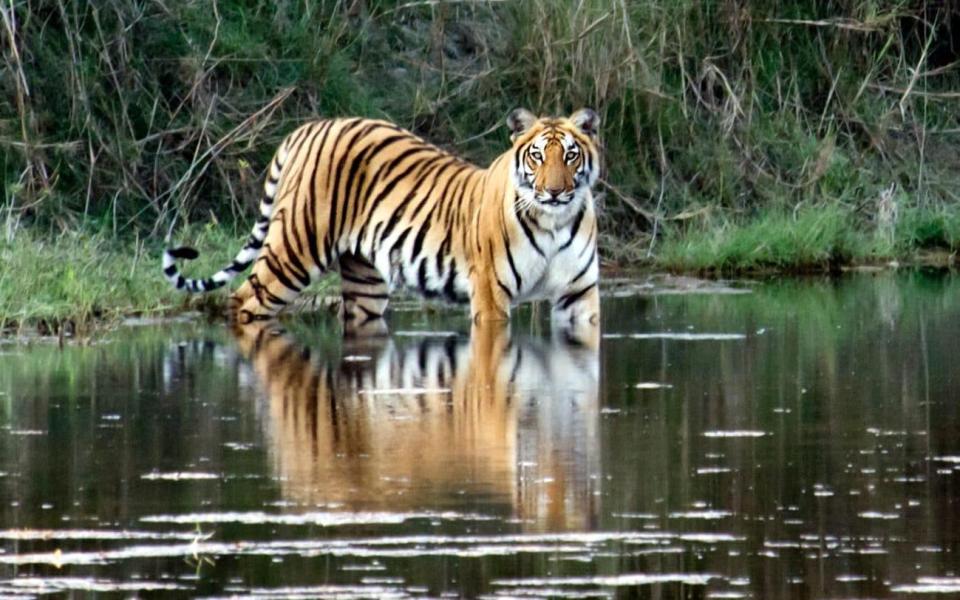
I was strolling slowly through the jungle of Chitwan, sandwiched between two elephants, when it dawned on me how rarely you get to see their backsides up close. Chunchun walked just ahead of me, her colossal rear reminding me of wrinkled baggy trousers, her skinny tail similar to a pendulum, swinging rhythmically. Champa walked behind, with mottled pink ears, super-long eyelashes and a layer of beige dust like foundation powder on her face. We moved silently, like spirits of the forest, and I almost forgot about the tigers and rhinos we might meet en route.
A year ago, just before Covid-19 hit the headlines, I flew into Kathmandu past jagged Himalayan peaks that sparkled snow-white against clear blue skies. On previous trips to Nepal, I had gone trekking in the foothills, but this time I was there purely for the wildlife.
Resident tigers and rhinos, both increasing in numbers, were being hailed as conservation success stories for the forthcoming, ill-fated Visit Nepal 2020 tourism campaign. Unsurprisingly, it was suspended in March.
Nepal’s airports, hotels, lodges, tea-houses and mountain trails closed. Even Everest, its biggest earner, went into lockdown.
Today, domestic tourism is tiptoeing back, albeit cautiously and under strict protocols, with hotels and restaurants allowed to reopen since July 2020. Limited flights for international tourists resumed in October, as did some trekking and mountaineering trails, including Everest, for those with permits already. And the country’s national parks and reserves, closed since March, opened their gates in September.
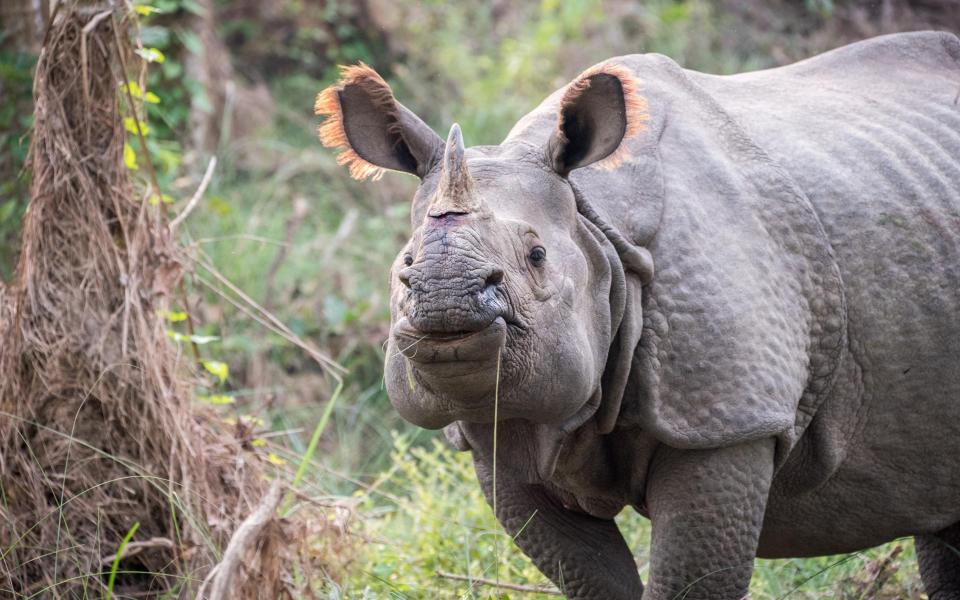
A 20-minute flight from Kathmandu, followed by an hour’s drive, Chitwan is Nepal’s best-known national park. A Unesco World Heritage Site in the southern Terai region, its 360 square miles of grasslands, riverine and sal forests are home to 68 mammal species, including 93 tigers and 600 one-horned rhinos.
My walking companions, Chunchun and Champa, belonged to Tiger Tops Tharu Lodge, set in pretty gardens just across Narayani River from the park. Elephant-back safaris had been the norm in Nepal but in 2017, Jack Edwards, Tiger Tops’ director, removed his elephants’ chains and offered walks alongside them instead.
As we ambled through the forest, our gentle giants snatched at branches amid rumbles of contentment seemingly emanating from deep within.
We spotted rhino prints the size of dinner plates and climbed an observation tower to watch a huge rhino grazing among tall grasses 50 yards away.
Rhinos and tigers aren’t the only rare species here: there are Gangetic dolphins, sloth bears and critically endangered gharial crocodiles too. Returning to Tiger Tops by boat, we spotted three gharials basking on the riverbank. Smaller than the man-eating marsh mugger species, these feed on fish and have strange bulbous blobs at the end of their narrow snouts. Only 100 survive in Nepal. “They’re even rarer than tigers,” our guide explained.
For more than 50 years, Tiger Tops has had at its core conservation and community advancement. Despite the pandemic, that ethos still holds. “We’ve had no income since mid-March,” Edwards told me recently. “For now, we are digging deep into our reserves and donations to keep our elephants well-fed and active. Most staff are at home on reduced salaries. Our naturalists continue to assist with long-term tiger monitoring and community-based anti-poaching projects, and our charitable school at Tharu is still open.”
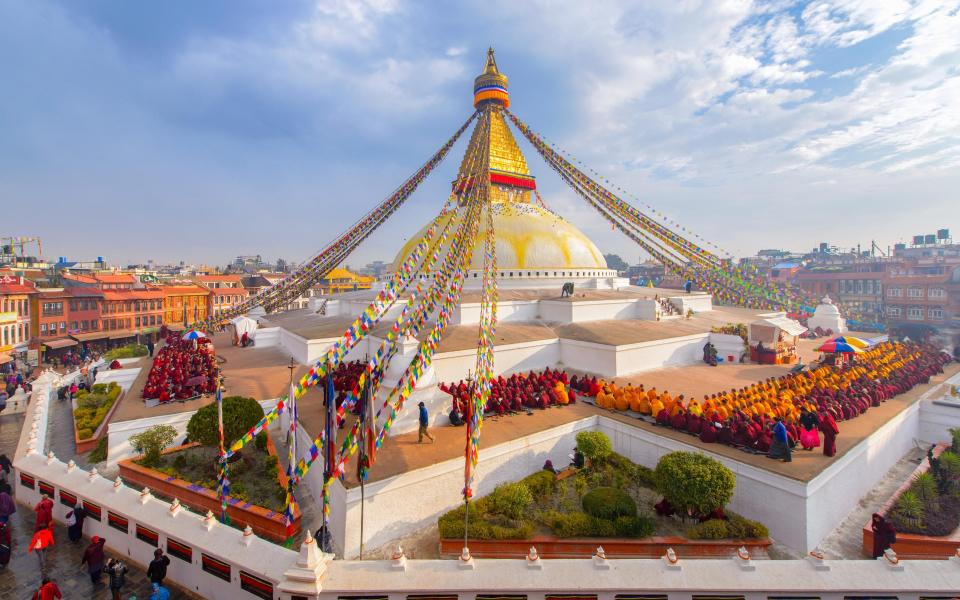
Though eager to receive guests any time, Edwards believes it will take a while for vaccines and Nepal’s health system to get the country on its feet again. The monsoon rains from June to September may serve as an added deterrent for international tourists.
My safaris in Chitwan’s forests brought Kipling’s Jungle Book to mind, with dangling vines, lush ferns, trees dripping with dew, moss-covered boulders and melodic birdsong. On drives, we saw Bambi-like spotted deer, huge, shaggy sambar, and tiny barking deer named after their ugly alarm call.
Peacocks and jungle fowl, like fancy cockerels, strutted around and ospreys soared above Devi lake, while langur monkeys and rhesus macaques jumped around tall sal trees. Somewhere here roamed elusive wild elephants and tigers – we saw their tracks – and by the Rapti River, we watched two rhinos crossing the shallow water, then running away.
Later, Tharu’s elephants joined us for sundowners at the river. Unlike the “old” days, guests no longer bathe with them and the elephants decide whether to go in the water or not. Sandra and Sawarsofi almost ran in while we sipped our G&Ts and watched them playing as the skies turned gold.
The next day, a 15-minute flight took me to Pokhara, Nepal’s second city that fans out from the shores of Phewa lake, to discover the myriad birdlife among the fjord-like hills of Pokhara Valley. My lodge, Pavilions Himalayas The Farm, raised the benchmark on local luxury when it opened five years ago. Its satellite tented camp, Pavilions Himalayas Lake View, started welcoming guests in 2019. Both are hoping to resume their service from next month.
The Farm – a community-focused, eco-friendly property 40 minutes’ drive into the hills from Pokhara – has 14 very cool villas among the terraced slopes of its organic farm. With jewel-hued decor and a glowing fire, the lounge overlooks the infinity pool and the Himalayas beyond. You can cycle, walk, amble around the farm, or chill at the spa or bar – but my mission was birdwatching.
I took a guided six-hour hike to Pavilions Lake View, walking uphill past villages and farmsteads to reach the World Peace Pagoda, a hilltop stupa overlooking Pokhara and its sparkling lake. “The Pokhara Valley is excellent for birding,” said Pavilions’ naturalist Ambika Prasad Parajuli, “but few people know about it. Most go to the national parks. We have 400 species here, including rare red-headed trogons and piculets.”
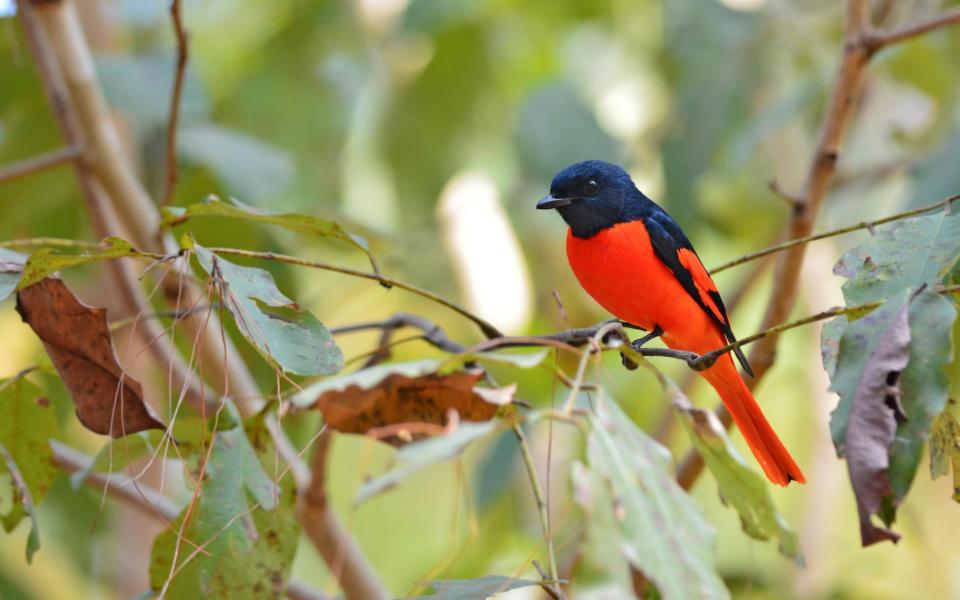
Ambika enthralled me with his running commentary of our rainbow-coloured sightings. We spotted scarlet minivets, the males bright red, the females yellow, and Himalayan flameback woodpeckers with fiery orange backs. Plum-headed and blossom-headed parakeets screeched ungraciously as they flew overhead; a maroon oriole hid behind foliage and a lovely blue-throated barbet (mostly green) sunned itself on a pole. Within two hours, we had seen nearly 40 species.
Back at Lake View, with eight elegant tented rooms scattered around the hillside, I chilled in the bar on sofas made from old fishing boats and gazed at the Annapurna skyline. The mountains turned pink at sunset then disappeared into darkness as Pokhara’s twinkling lights took over. On my last night, I dined by the firepit under the stars.
My final destination was Bardia National Park in west Nepal, the best place to spot Bengal tigers. Bardia suffered terribly through poaching during Nepal’s decade-long Maoist insurgency, which ended in 2006; by 2009, only 18 tigers remained. Today, after a renewed focus on conservation, they number 87, sharing this beautiful wilderness of riverine and sal forests with 50 other mammal species and 400 species of bird.
That tiger numbers have almost doubled in Nepal, from 121 in 2009 to 235 today, is an exceptional achievement. “It’s good news,” said Ana Nath Baral, Bardia’s chief conservation officer, “but an increase in tigers means an increase in challenges. It is harder for tigers to hunt, so they go outside the park, leading to more human-wildlife conflict.”
The traveller’s dream of seeing a tiger is the stuff of nightmares for locals. “Eight people have died here in the past 12 months,” Baral told me. “Never have so many people been killed in one year. But if we lose tigers [because of this], it will have a big impact on Nepal – and an even bigger impact on the world. If the global community wants tigers, the global community must invest in them.”
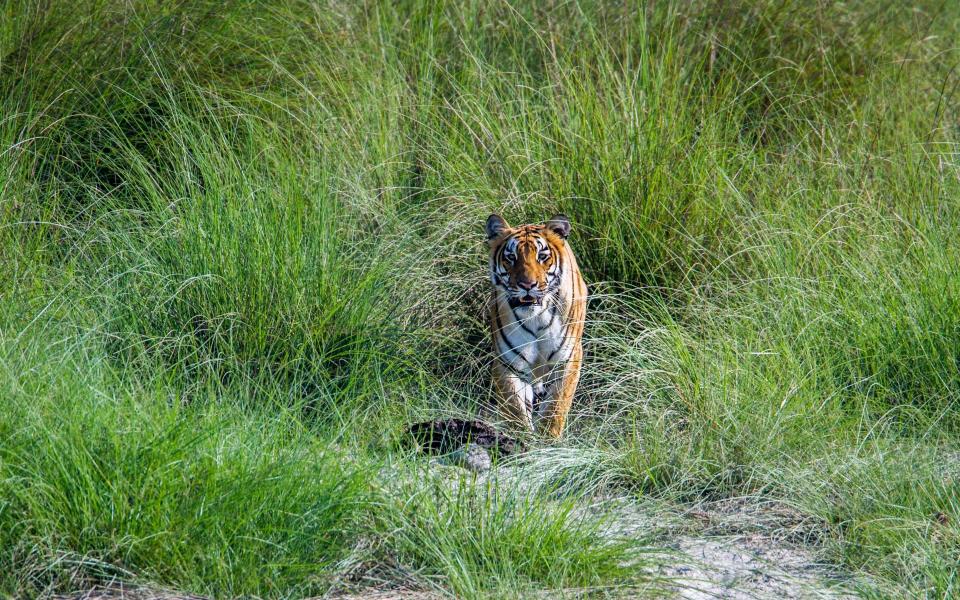
Driving through the forest one cool, misty morning, my guide Shambhu Mahato spotted pin-sharp pugmarks of a male tiger in close pursuit of a female.
“They are normally solitary but walk around like this when they are planning to mate,” he whispered. A few paces away were fresh rhino tracks and we joked that we might actually witness a voyeuristic one-horned rhino watching the tigers in coitus. Searching for our threesome, I realised how easily russet-coloured leaves can look like tigers in the stripy shadows. “Wildcats sometimes appear if you are quiet and still,” Shambhu said, so we parked up. Right on cue, two figures emerged on the track ahead. It wasn’t our copulating tigers but beautiful golden jackals, their hides glowing in the sun. Deer and monkeys were everywhere too. Sadly, the tigers and rhino eluded us.
Nor did we ever spot crowds of tourists. “Even in high season, you might only see another 10 jeeps here because it is so remote,” said Bhagirath Chaudhary, manager of Tiger Tops Karnali Lodge, the best in the area. Its nine rooms were all relaxing natural hues and subdued elegance, its staff warm and friendly, and the dining lifted the Nepali staple meal, dal bhat (rice, lentils and veg) to a sublime level.
On my last day, I opted for a drive, rather than a walk, hoping to increase our chances of seeing a tiger. Sometimes, we heard alarm calls echoing through the forest; sometimes we just heard sweet birdsong and dew dripping off the leaves as we waited patiently for our predators.
Sometimes, the waiting pays off – not for me this time, but (ironically) for those who chose to walk.
Over dinner, a fellow guest told me how they had waited and waited near a waterhole. Then the tiger had emerged, silent as a ghost and with a nonchalant swagger. He lay there dozing and lapping up the water as they watched him for one whole magical hour. Next time, next time.
The details
Wildlife Worldwide (01962 302086; wildlifeworldwide.com) is offering a two-week trip to Nepal from £4,195 per person, including international flights from the UK, domestic flights and transfers.
The itinerary includes stays at the properties mentioned in Sue Watt’s story, plus two nights at Yak & Yeti, Kathmandu, one night at Mum’s Garden, Pokhara, and one night at Kathmandu Guest House, Kathmandu, all with breakfast.

